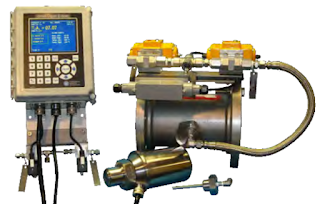Cooked starch or sizing liquid is used in paper sizing to reduce the paper's tendency to absorb liquid when dried. The reduction in fluid allows inks and paints to better remain on the surface and helps create stabilized sizing conditions, allowing a consistent paper quality across the different paper grades.
The MPR E-Scan gives paper companies the ability to accurately control the sizing/cooked starch by detecting changes in the concentration of the cooked starch. This precise measurement effectively controls the freshwater flow to the size press/starch circulation system, reducing excessive water usage. Combining the measurement with data-analysis tools, a company can monitor inefficiencies in the starch/sizing line and evaluate the dilution levels. The result is improvements in starch/sizing operation's efficiency and an overall reduction in water, reducing the overall time needed to meet target dilution. By providing a near-instant reading of starch concentration and temperature, the instrument removes the reliance on offline testing. This application should also include automatic prism wash using heated high-pressure water and matching the wash water temperature to the process, reducing any thermal shock and sensor.
FEATURES- Data logging output for dilution and temperature
- Multiple product ranges and configurable set points.
- Sapphire Prism
- Daylight visible color display
- NEMA 4X
- Stainless-steel CNC machined sensing head
- 4-20mA & RS-232 outputs
- In-house manufactured in USA
- 24 Hour Service Support
- (2) Input & (6) Configurable output relays
- Configurable alarm points: high/low, setpoint/ deviation, etc.
The MPR E-Scan is constructed of various alloys to ensure a long service life in a harsh chemical environment. The instruments fit into any process with custom pipeline adapters. Due to the unique measurement principle, the instrument readings are unaffected by bubbles, particles, fibers, color, flow, pressure, or vibration. Paper companies can guarantee that proper dilution was met and maintained by utilizing the instrument to control and monitor the starch liquid concentration.
KEY BENEFITS- Increased paper quality.
- Continuous accurate control of dilution factor.
- Consistent cooked starch quality.
- Increased paper grade production.
- Reduced water and steam use for the cooking process.
- Error and Warning light indications.
- Reduced time for correct sizing/ starch concentration.
- Continuous temperature readings.













